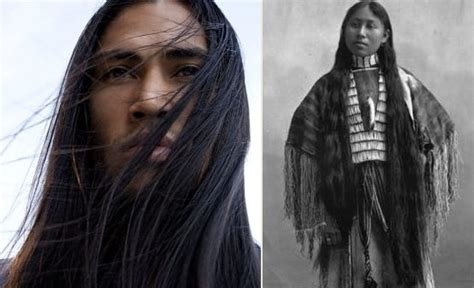Explore why Native American hair shows remarkable resistance to male pattern baldness. Delve into genetic factors, cultural significance, and the need for further research in this intriguing study.
Native Americans are renowned for their stunningly long, straight, jet-black hair. Interestingly, this distinctive trait has caught the attention of scientists studying hair loss. Research has revealed that certain Native American tribes seem to be remarkably resistant to male pattern baldness, a common condition affecting many men worldwide. This intriguing observation raises questions about the genetic factors that might contribute to this natural immunity.
The Fascinating Case of Native American Hair

Native American model Martin Sensmeier, hailing from Yakutat, Alaska, is well-known for his iconic long hair. His striking appearance is more than just a personal style—it’s a reflection of a broader trend observed among many Native American men. Studies have shown that men from tribes with ancestry linked to the Alaskan Bridge region are notably less likely to experience Androgenic Alopecia, the scientific term for male pattern baldness.
Cultural Significance of Native American Hair
Hair holds significant cultural value in Native American traditions. For instance, among the Navajo, a child’s hair is cut on their first birthday, and from that point, it is left to grow uninterrupted for their entire life. In contrast, other tribes might shave their heads to signify mourning. Generally, Native American men prefer to grow their hair long, often styling it in loose braids, which is deeply embedded in their cultural practices.

Genetic Factors and Hair Loss
Despite the general resistance to hair loss within some Native American tribes, there are exceptions. Some men from these tribes still exhibit signs of Androgenic Alopecia. This phenomenon may be due to historical intermarriage with other tribes, potentially introducing genetic predispositions for hair loss.
Male pattern baldness is primarily caused by genetic factors affecting the conversion of testosterone into dihydrotestosterone (DHT), an androgen that attacks hair follicles. As DHT shrinks these follicles, hair growth diminishes, leading to thinning hair and eventually bald patches.
The Need for Further Research on Native American Hair
Although we understand the genetic basis of male pattern baldness, the reasons behind the resistance observed in some Native American tribes remain unclear. Further research is needed to determine whether these genetic insights could lead to new treatments for hair loss.